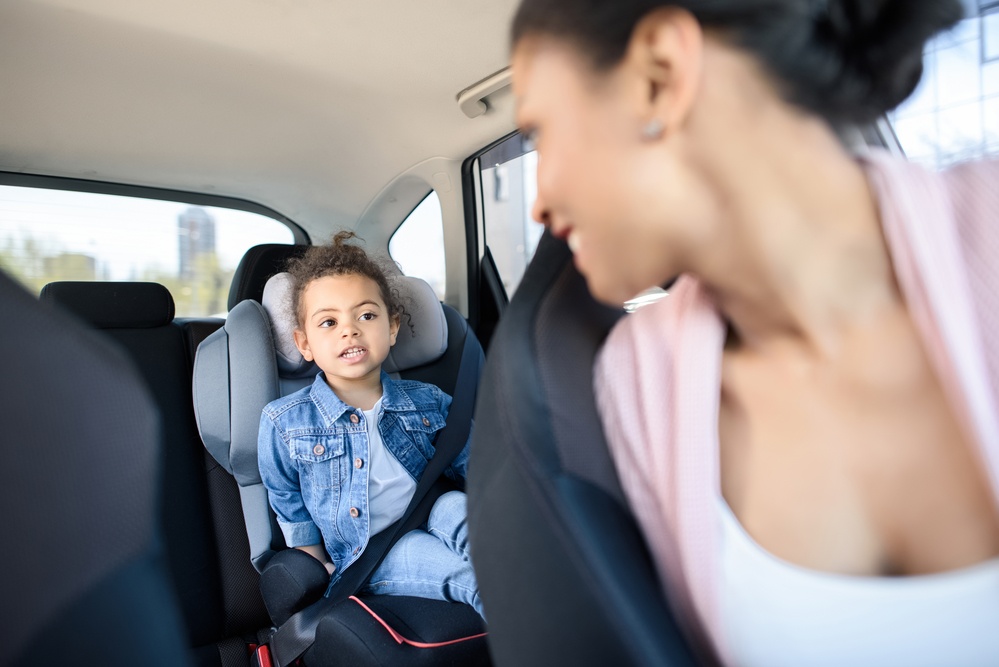 If you’re in the market for a car, you may have questions about the best car safety technology for Houston drivers.
If you’re in the market for a car, you may have questions about the best car safety technology for Houston drivers.
Before you buy a used car, compare safety features. While it’s a given that everyone in the car should buckle up a seat belt before the ride begins, today’s newer vehicles have many advanced safety features, such as automatic emergency braking or forward-collision warning to help the driver avoid accidents.
Let’s review some of the best car safety technology now.
Active Safety Systems
An active safety system can actually help you to mitigate or avoid a vehicle crash in many situations, e.g. backing out in a parking lot, closing in on another vehicle too quickly, or changing lanes in a blind spot.
Look for these key features in an active car safety technology system:
- AEB (Automatic emergency braking). The brakes automatically apply to reduce the driver’s collision speed. This can help the driver to prevent a crash.
- FCW (Forward-collision warning). An audible and/or visual warning alerts the driver to prevent a crash.
- BSW (Blind-spot warning). The system provides and audible and/or visual notification of a blind spot. The BSW may also provide an added warning if the driver uses the turn signal when another vehicle is adjacent on the road.
- Rear AEB (Rear automatic emergency braking). The vehicle’s brakes automatically apply to prevent the driver from backing into an object or vehicle behind it. This may be triggered by the system’s rear cross-traffic sensors or others on the vehicle.
- LDW (Lane-departure warning). The system provides a haptic, visual, or audible warning to warn the driver that he or she is crossing lane marks.
- LKA (Lane-keeping assist). The system automatically corrects braking or steering inputs when the vehicle crosses lane markings.
- Lane-centering assist. The system implements active continuous steering to keep the vehicle between lanes (also called autosteer or active steer by some manufacturers).
- Rear cross-traffic warning. The system provides a haptic, visual, or audible notice of a vehicle or object that’s out of the rear camera’s range (but might be moving into it).
- Adaptive cruise control. This feature uses cameras, lasers, radar, or combines some of these elements to maintain a constant distance between the driver and the vehicle ahead to keep a safe following distance. Should traffic slow, the system may bring the vehicle to a full stop (and comeback to speed as the traffic resumes again).
- Pedestrian detection. This feature utilizes the automatic emergency braking/forward-collision warning to alert the driver. Radar and/or cameras search for any pedestrian in the path of the vehicle with visual/audible alerts. Some vehicles apply automatic emergency braking if the potential for collision is considered high.
- Active head restraints. These automatically move forward and up in the event of a rear crash to cradle users’ heads and to absorb impact. The goal of this system is to lessen the potential of neck/whiplash injuries.
- Backup camera. Many vehicles come with standard backup (rear-view) cameras in 2018. This system is active when the driver places the vehicle in reverse. The rear of the vehicle is displayed at the rear-view mirror or center console. This system can help the driver to spot pedestrians or children in the blind zone behind the vehicle. Some advanced systems provide a 360-degree view.
- Automatic high beam. This feature transitions the beams from low to high, and back again, to improve night visibility and/or when conditions warrant.
Not every manufacturer offers all active safety systems and, as noted above, some features have different names. It’s up to the vehicle buyer to figure out the necessary active safety options as well as the most desirable trim.
Tire Safety Systems
As of October 31, 2006, the federal government required all vehicles to include a low-pressure tire warning system. Improperly inflated or underinflated tires reduce fuel economy and handling. In some situations, improper tire inflation can cause a blowout.
Because tires often lose pressure over a period of time, the driver might not notice the difference.
Tire-pressure monitors either directly measure tire pressure or indirectly by monitoring the number of wheel revolutions.
Either way, it’s still prudent to regularly check tire inflation with a standard tire pressure gauge.
Telematics
Some vehicles offer an automated service that combines Global Positioning Satellite (GPS) and mobile technologies.
These safety systems facilitate the driver’s ability to instantly communicate with a dispatch center in an emergency. The dispatch center accesses the vehicle location and sends emergency services.
The vehicle also communicates with the dispatch center. For instance, if an airbag deploys, the service center can send emergency services if the driver doesn’t respond to phone contact. The service also allows the dispatch center to unlock the vehicle or to release the vehicle horn if it’s lost in a parking lot.
Safety Technology for You
The easiest way to select safety technology starts with your budget and lifestyle. Choose the features you need. Most drivers don’t need every safety technology system or feature.
If you’re a disabled or older driver, blind spot alerts and lane departure warnings may be invaluable for you.
If you’re a younger driver, collision warnings and park assist may be on your must-have safety technology list.
If you frequently drive at night, you can benefit from many safety tech features, e.g. adaptive headlights.
Consider these safety technology features for your needs:
- Electronic stability control. Most drivers benefit from this feature. The technology actually stabilizes individual tires during a turn. It can help to keep the vehicle on course.
- Most drivers have had the experience of accidentally veering into the wrong lane. Lane-keep assist detects the vehicle’s inappropriate lane change and directs the vehicle back into the proper lane. Mobility-challenged individuals may especially benefit from this safety technology.
- Adaptive cruise control. This is another popular safety technology feature. It monitors the driver’s entered distance and speed to the vehicle ahead.
- Collision warning system. A collision is a terrifying experience. This popular safety technology feature alerts the driver when a collision is about to happen. Less experienced and younger drivers may especially benefit from this feature.
- Adaptive headlights. Driving in inclement weather or night driving requires the driver’s full attention. Adaptive headlights automatically adjust to the road and driving conditions.
- 360-degree camera. In addition to protecting the driver from rear-view blind spots, a 360-degree camera allows the driver to fully assess the area around the vehicle.
- Active park assist. Parking on a busy street or in a tight parking space can be nerve-wracking. Active park assist simplifies these tasks.
- Drowsiness alert. Drowsiness behind the wheel can have deadly results. Drowsiness alert safety technology alerts the driver to take a break for safety’s sake. This safety technology feature is a must for those who frequently drive at night.
Car Safety Technology and Teen Drivers
Parents typically select safety over price when selecting the right vehicle for their teen driver.
It may be unnecessary for parents to buy their teen an SUV for safety’s sake. According to Consumer Reports, an easy-to-steer mid-sized sedan with a four-cylinder engine and anti-lock brakes is a popular choice. Parents often select electronic stability control safety technology features to help the new teen driver avoid swerving.
Best Car Safety Technology for Houston Drivers
If you need a vehicle, consider one with active car safety technology. These features help you or someone you love to mitigate or completely avoid a collision in many situations.
Some of the safest vehicles on the market use active and passive safety technologies to protect occupants. As discussed above, today’s recent model vehicles can assist in steering themselves, braking automatically, keeping safe distances from other vehicles, and warning drivers of imminent collision.







